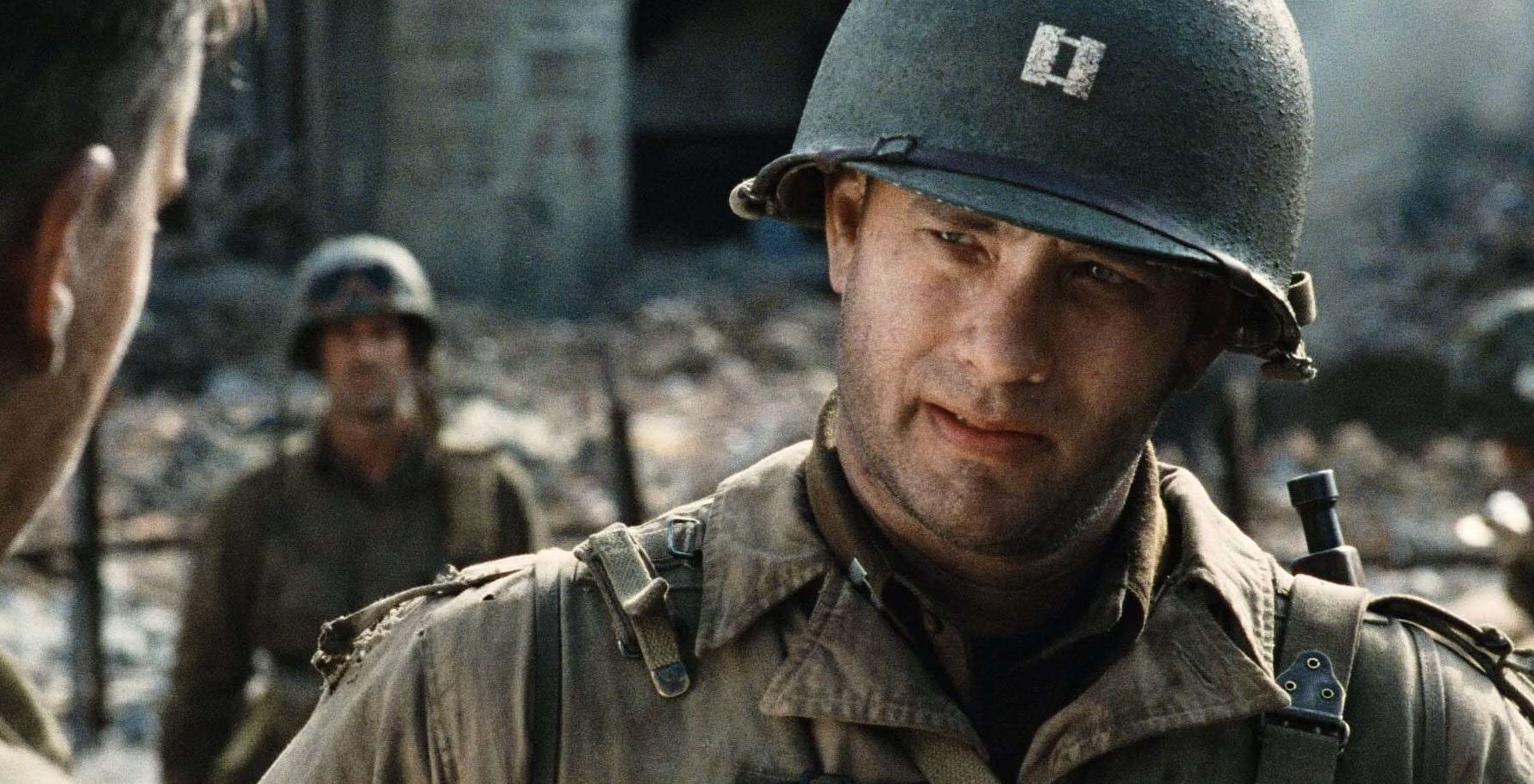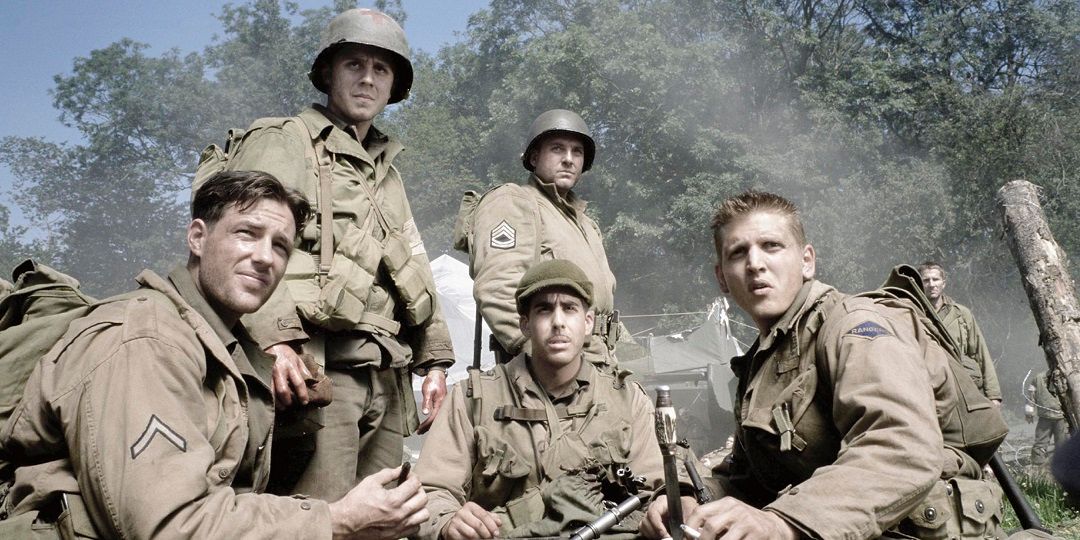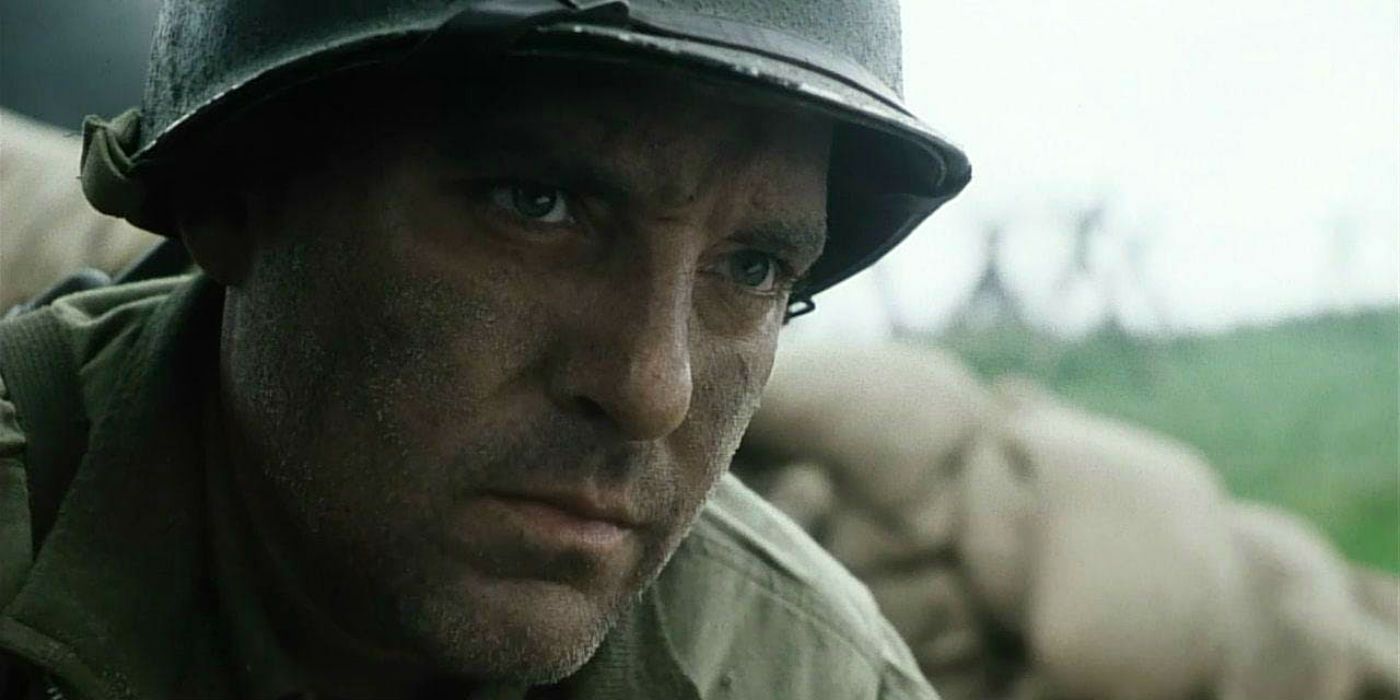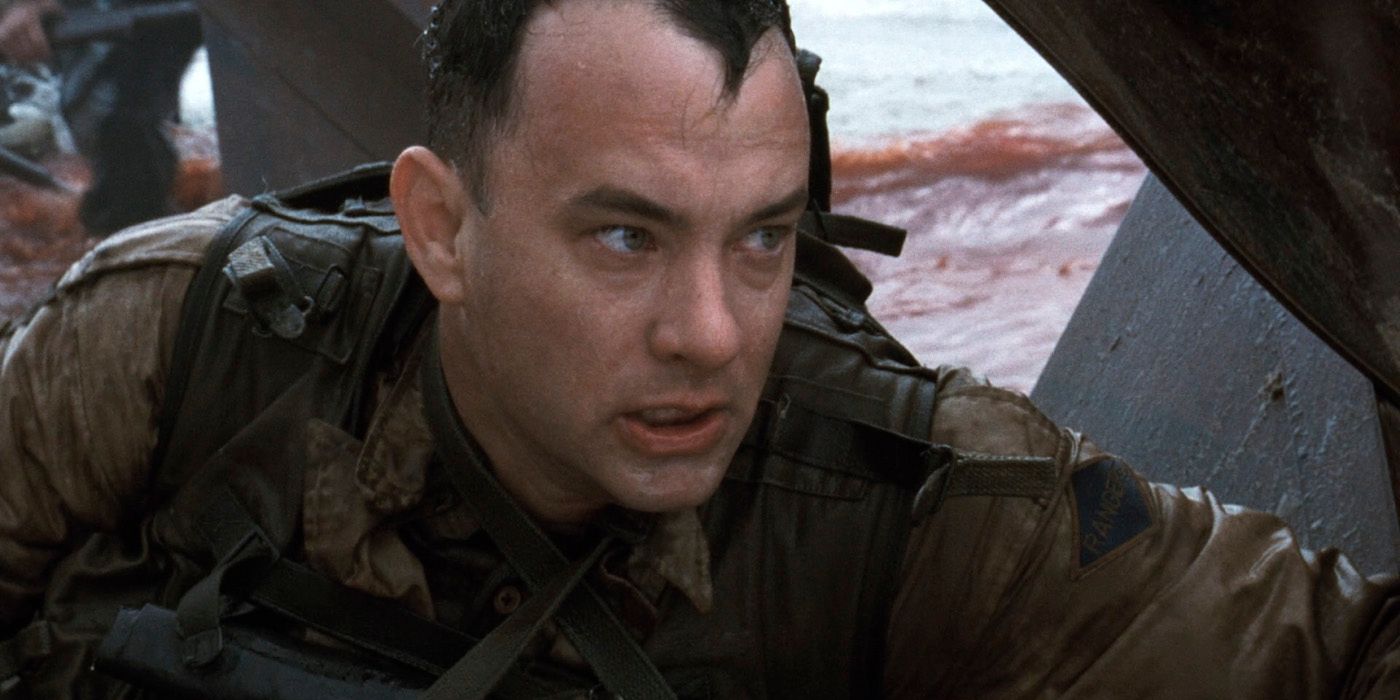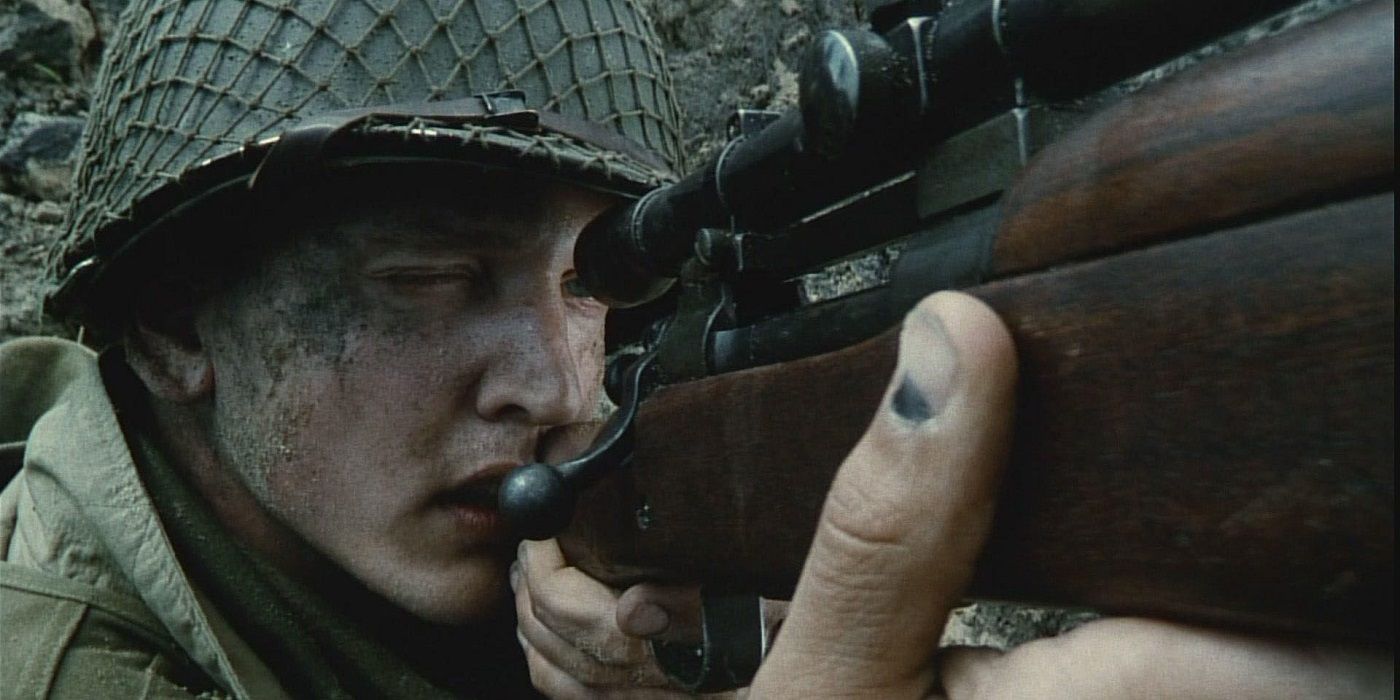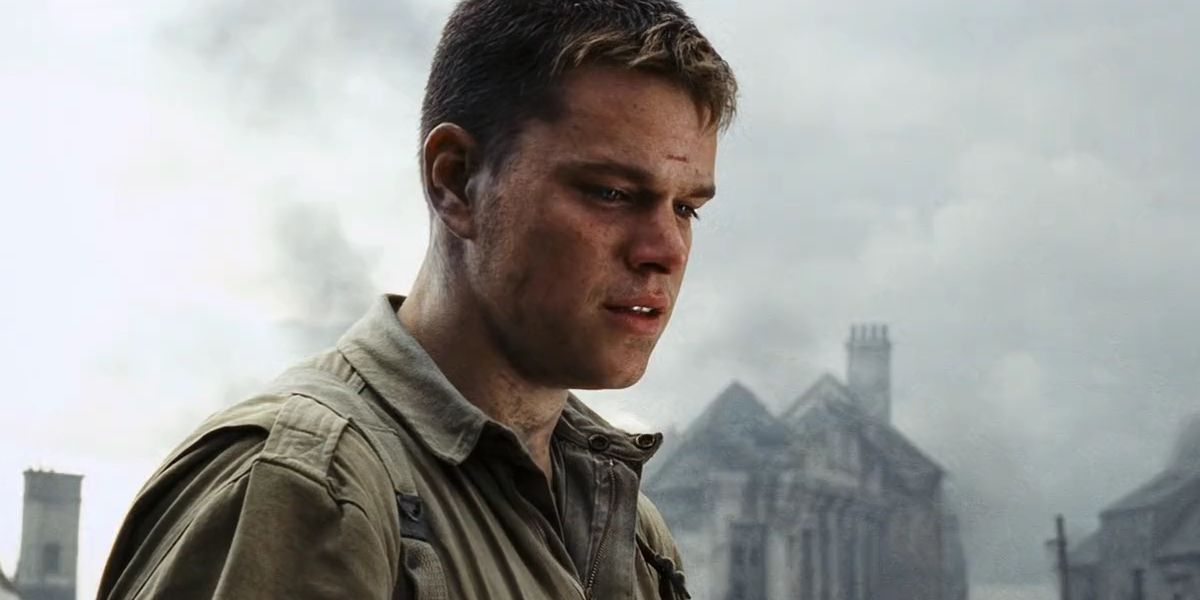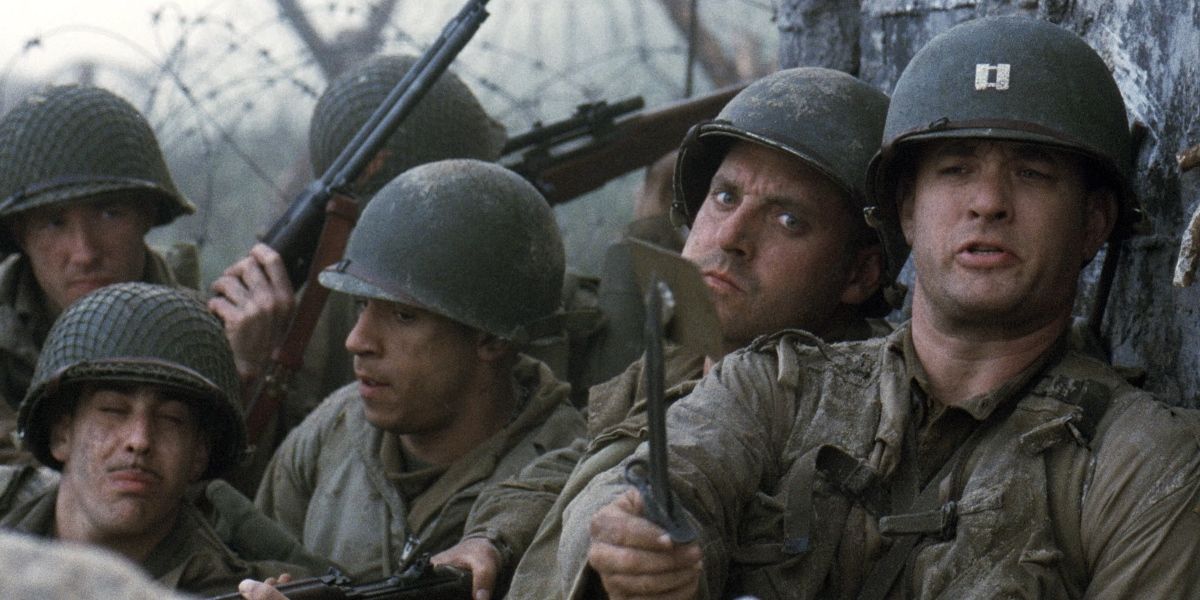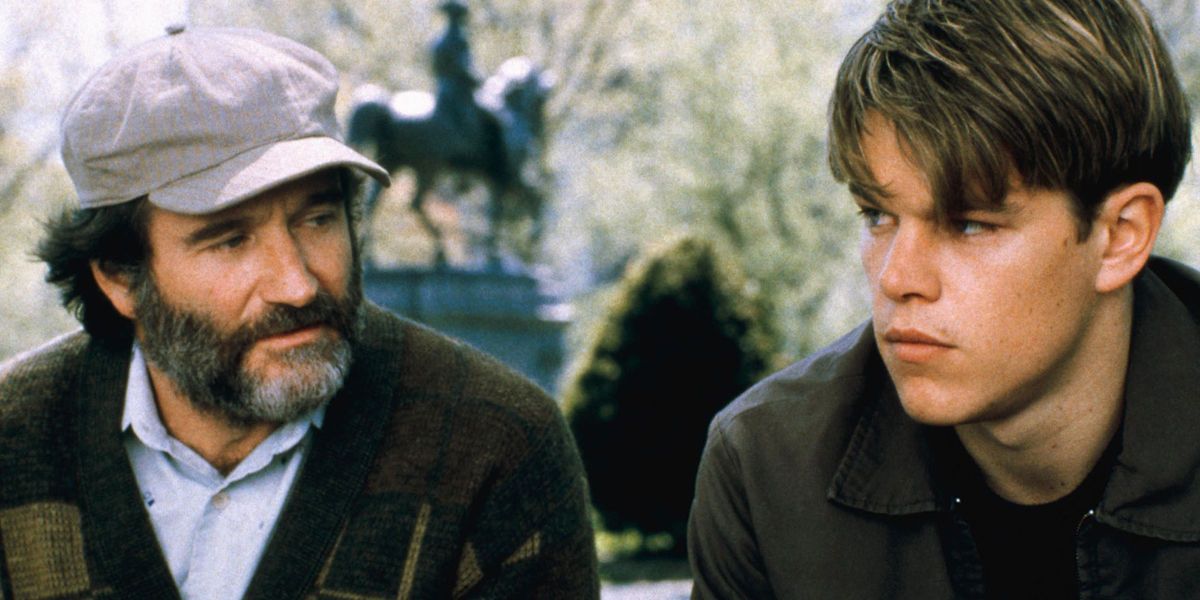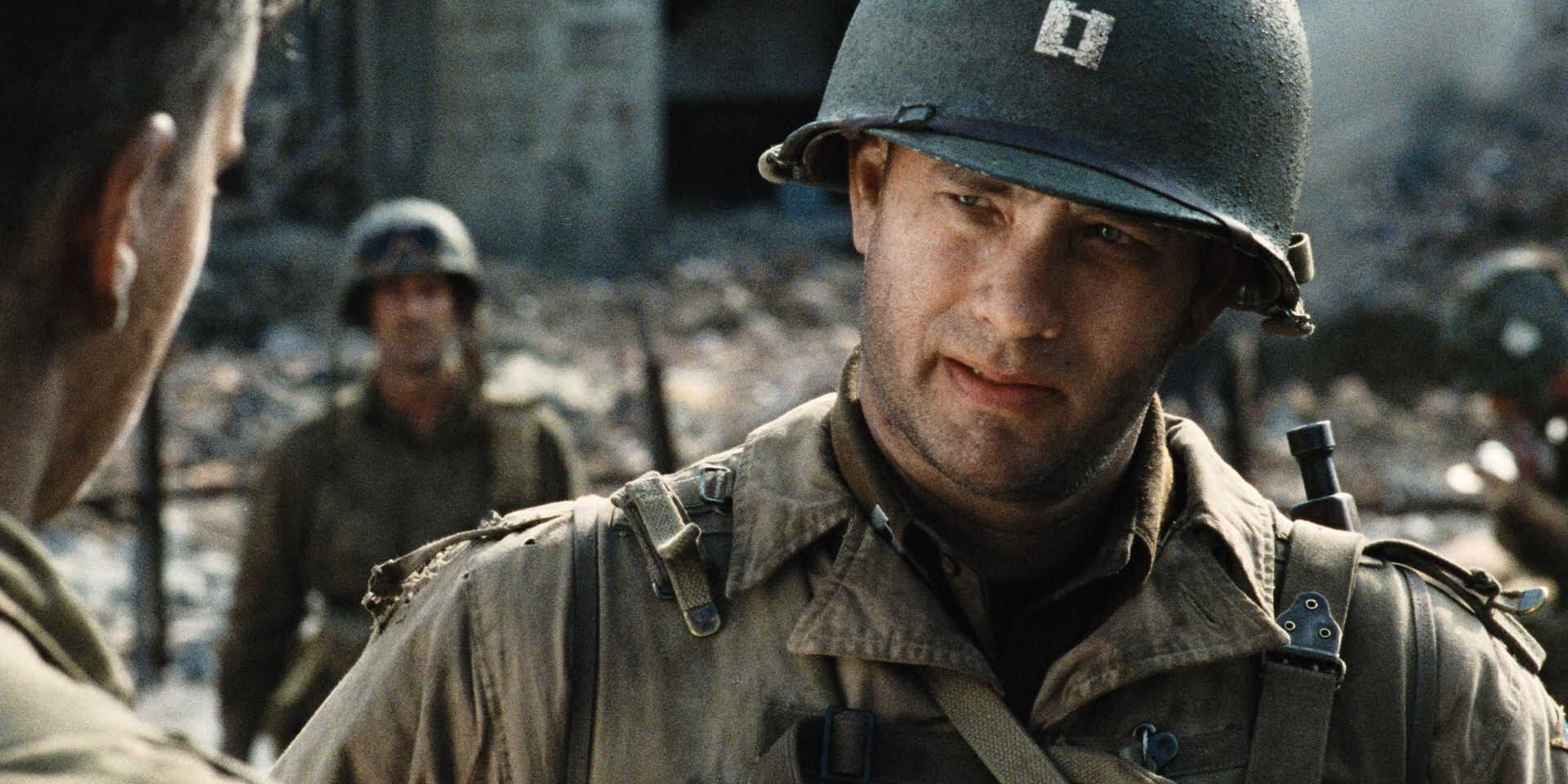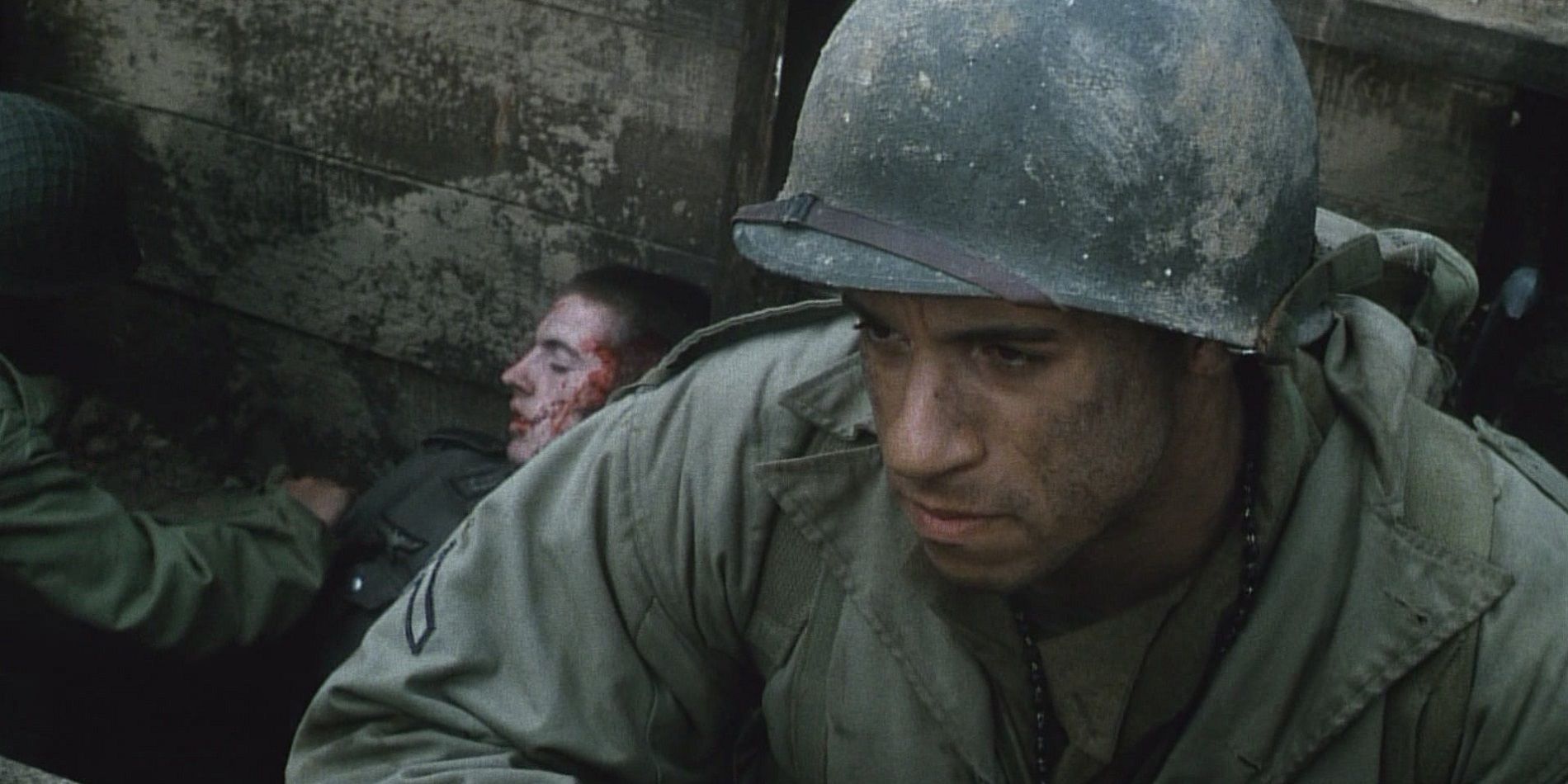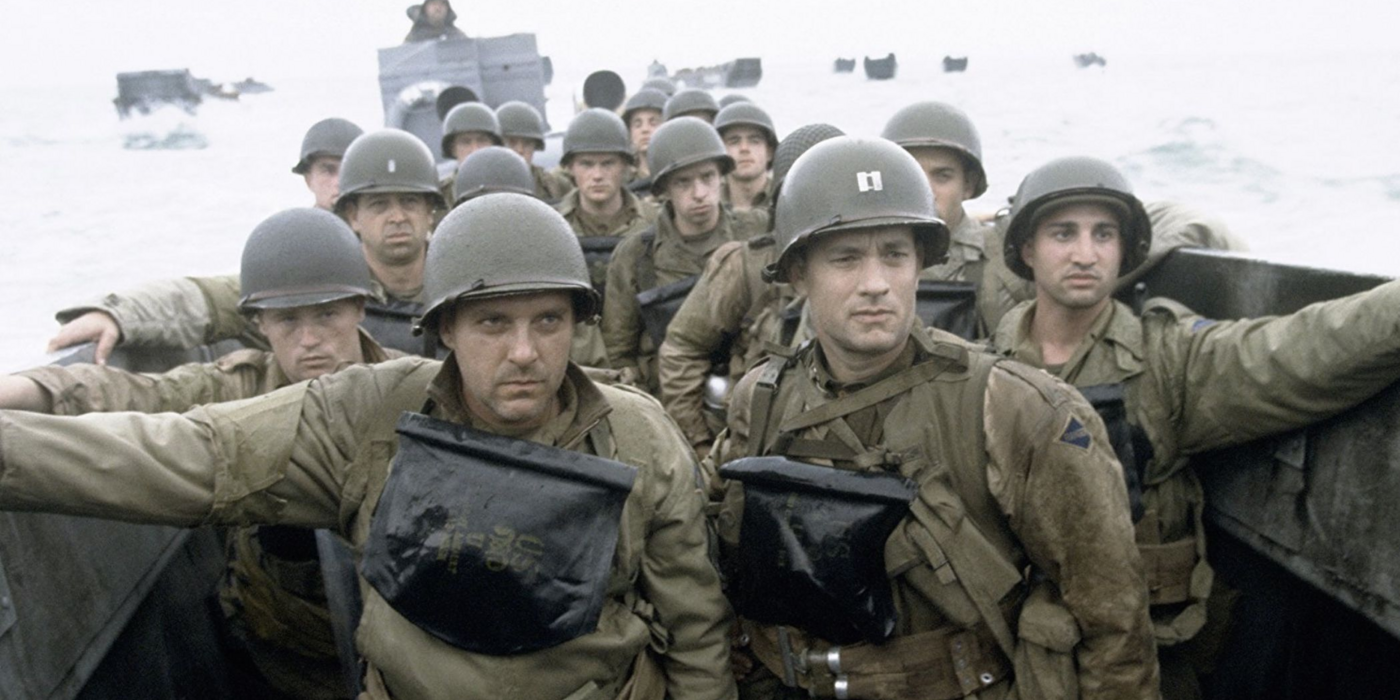Steven Spielberg’s Saving Private Ryan is arguably the greatest World War II film ever made. Although its premise of an entire platoon being sent to save one guy is a little far-fetched, the combat scenes are all too realistic. In fact, the opening D-Day sequence reportedly triggered PTSD attacks in actual WWII veterans.
The movie went on to be a box office smash that swept the Oscars, but making it was no easy feat. Production on Saving Private Ryan didn’t suffer from any major setbacks, but it was still a monumental challenge. So, here are 10 interesting behind-the-scenes facts about Saving Private Ryan.
10. The plot was loosely inspired by the true story of the Niland brothers
Screenwriter Robert Rodat was initially inspired to write Saving Private Ryan when he saw a monument to the four sons of Agnes Allison, who were all killed in the American Civil War. However, when the premise got into the hands of producer Mark Gordon and eventually director Steven Spielberg, inspiration came from the true story of the Niland brothers. They were four brothers fighting in World War II.
Two of them died and two survived. However, it was initially thought that only one of them survived, as the other one was missing and presumed dead. He turned out to be a prisoner of war in a Japanese internment camp.
9. Filming Saving Private Ryan got Tom Sizemore off drugs (temporarily)
Steven Spielberg’s strict rules on the set of Saving Private Ryan helped to get Tom Sizemore off drugs. Spielberg told the actor that he couldn’t take any drugs while they were shooting the movie. The producers would test his blood every single day, and if they ever found traces of blood, they would fire him and reshoot his scenes with a different actor, even if they were near completion.
And Sizemore remarkably made it through the entire production clean and sober. Unfortunately, the actor would go on to relapse into drug abuse a few more times in the following decades.
8. Steven Spielberg would’ve released the movie with an NC-17 rating
While he was making Saving Private Ryan, Steven Spielberg feared that the movie’s brutal violence would lead the MPAA to assign it an NC-17 rating. Big Hollywood studios usually strive to avoid NC-17 ratings like the Bubonic Plague, and make whatever cuts are necessary to change the rating, because they’re box office poison.
Some theaters won’t show them and the ones that will show them can only admit audience members over a certain age. But Spielberg was so happy with Saving Private Ryan that if it had come back from the MPAA with an NC-17 rating, he still would’ve released it.
7. The gunfire sound effects are authentic
To acquire the right sound effects for the guns used in the movie, Saving Private Ryan’s sound team went to a live machine gun firing range near Atlanta that was owned by a weapons manufacturer. There, they sourced all of the period-specific weaponry that was being used in the movie, that they needed to find the sounds for, and they just started firing them at the shooting range.
They recorded the sounds of all the actual gunfire and those are the sounds that appear in the movie. The attention to historical detail in this movie is nothing short of magnificent.
6. Matt Damon was supposed to be unknown
Steven Spielberg specifically wanted to cast an unknown actor to play Private Ryan in the movie, because he didn’t want the audience to recognize them. That’s why he picked Matt Damon. At the time, Damon was completely unknown and had the all-American look that Spielberg was seeking.
The director had no idea that Damon would go on to win an Oscar for co-writing Good Will Hunting and become an overnight movie star before Saving Private Ryan was released. By the time the movie came out, audiences around the world knew Damon’s face, so the original intentions were thrown out the window.
5. Saving Private Ryan is the last non-digitally edited Best Film Editing winner
Pretty much every movie in the last 20 years has been digitally edited because digital editing – while losing some of the soul of the filmmaking process – is a lot cheaper, easier, and more secure than the old “cutting room” method. Saving Private Ryan was the last movie to be edited using non-digital technology to win the Academy Award for Best Film Editing.
Every subsequent winner of the Oscar for editing has been edited digitally. And digital isn’t going away any time soon, so Saving Private Ryan will probably hold onto the distinction of last non-digitally edited Best Film Editing winner indefinitely.
4. Robin Williams helped Matt Damon land the part of Private Ryan
While he was developing Saving Private Ryan, Steven Spielberg was busy shooting parts of Amistad in Boston. At the same time, Robin Williams was shooting Good Will Hunting in the same city, so he agreed to meet up with Spielberg while they were both in town, because they’d worked together on Hook and became friends on the set.
Williams brought his young co-star Matt Damon along for what was supposed to be a meet-and-greet with one of the world’s greatest living filmmakers. Spielberg saw something in Damon, and two weeks after their meeting, he called him about the part of Private Ryan.
3. Mel Gibson and Harrison Ford were considered for the role of Captain Miller
It’s hard to picture anyone other than Tom Hanks playing the lead role of Captain Miller in Saving Private Ryan, not least because Hanks’ powerful and respectful performance earned him an honorary place in the U.S. Army’s Ranger Hall of Fame. However, in the earliest stages of pre-production, Hanks was not the first actor that the producers considered for the role.
Initially, Mel Gibson and Harrison Ford were the top choices for the role. Both Gibson and Ford would’ve likely brought a gruff demeanor to Miller, but they might not have brought the vulnerability and emotional depth that Hanks eventually did.
2. Steven Spielberg created a whole new role for then-unknown Vin Diesel
After Steven Spielberg saw Vin Diesel’s incredible, raw lead performance in the independent drama Strays, which the future Fast & Furious actor also directed, wrote, and produced, he had a whole new role written into Saving Private Ryan just to fit him into the movie.
It’s hard to picture a world where Vin Diesel, one of the most universally recognized action movie stars, is completely unknown outside of the indie cinema scene, but that was the case in the mid-‘90s when he was just starting out. He caught the attention of Steven Spielberg and the rest, of course, is history.
1. The D-Day landings sequence cost $11 million
Saving Private Ryan’s opening D-Day landings scene took up a hefty chunk of the film’s $70 million budget, costing $11 million to pull off. Steven Spielberg decided chose not to storyboard the sequence at all, instead letting the action tell him where to point the camera (he elected to use a handheld camera for the scene) on the days of shooting.
The producers recruited 40 barrels of fake blood and more than 1,000 extras for the scene. Between 20 and 30 of these extras were amputees who could be fitted with prosthetic limbs for the sole purpose of being blown off in explosions.

